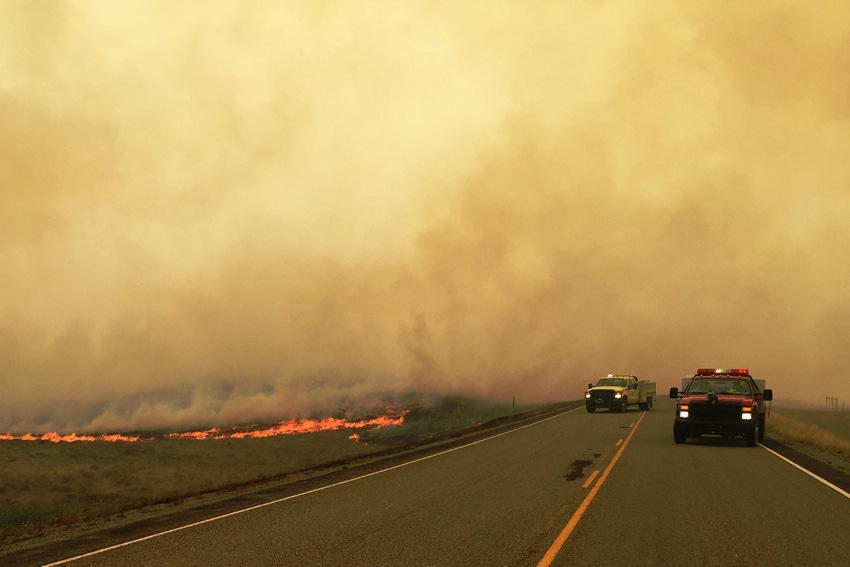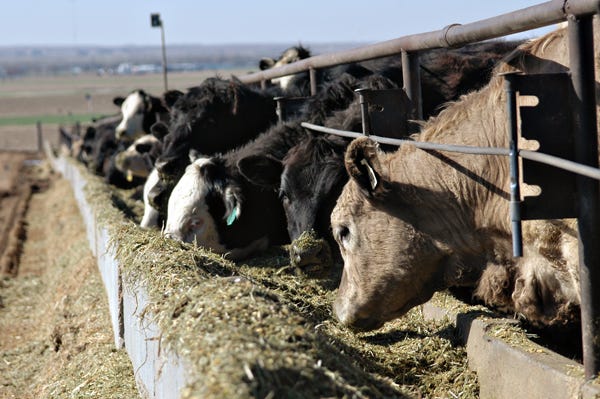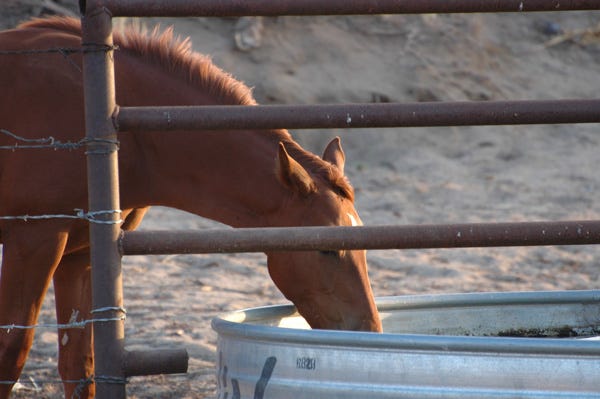
Cattle losses mount in Montana wildfires
"The only reason our horses are alive, our barn is still standing, our house is still there, is because of our neighbors. There were 14- and 16-year-old kids on the back of trucks holding hoses spraying water. Nobody has slept in days. The people that are here are the ranchers, and they have not stopped working; they have not gotten out of their graders. They are trying desperately to save these ranches.”
That’s Mary Brown’s description of wildfires that have scorched parts of Montana. On her ranch, 400-plus cattle are either missing or dead. She said they are OK on food and water supplies and scared to bring in hay, lest it burn as well. She said the best help is monetary donations in order to help these ranchers begin to rebuild once this is over, reports The Fence Post.
Click here for more and for a list of places that are accepting donations.
Pruitt touts regulatory certainty as a key for a new, improved WOTUS

EPA Administrator Scott Pruitt
EPA Administrator Scott Pruitt continued his multistate action tour in Oklahoma this past week, following visits to Utah, Minnesota and Arkansas earlier in July. The visit highlights the administrator's recent decision to begin the process to redefine the "Waters of the United States" (WOTUS) rule to help return power back to the states and provide regulatory certainty to farmers, landowners, and ranchers across the country.
He spoke of the need for "regulatory certainty" which he says will result in "folks knowing whether the rule applies to them or not so they will know how to allocate resources to comply and do what is necessary."
Pruitt promised that proposed language for a new WOTUS will be coming in September and he is hoping for a final new and improved WOTUS in the first quarter of 2018.
Click here to read and hear more on Pruitt’s ideas regarding WOTUS.
Monoslope barn maximizes cow comfort
Cows have a new place to calve in the deep-pack monoslope barn on the Gronewold farm, near Carthage, Ill., according to AgriNews.
“We decided to build this barn because we wanted more cows and I wanted to farm full time,” said Ashton Gronewold, who farms with his dad, Merlin, and brother-in-law, Evan Davidson. “This barn and doubling the cowherd seemed like the fastest, easiest way to get that done.”
The monoslope building is 100 feet wide by 252 feet long and it has three pens, a manure storage bay and calving pen. Feed bunks are located along both sides of the barn.
Feedyard profitability bolsters feeder cattle market

<p><span style=
Profitability has allowed cattle feeders to aggressively buy feeder cattle. The result has been more steers and heifers placed on feed than a year ago and higher feeder cattle prices, according to the Daily Livestock Report.
Monthly Cattle on Feed reports show that net placements (number of cattle placed minus other disappearance) into feedlots with 1000 head or more capacity during the first six months of 2017 was 11.17 million head. That was a year-over-year jump of 1.10 million head or 11%. Further, the number of head placed during January through June was the largest for that timeframe since 2003.
Virtual pasture walk at the Flying Diamond Ranch
The Flying Diamond Ranch at Kit Carson, Colo., has been home to the Johnson family for five generations. Until about 30 years ago, the ranch was managed traditionally. Cattle grazed 1,500-acre pastures for six months a year.
But after Scott Johnson went to a seminar presented by Alan Savory and learned about what was then called “Holistic Resource Management,” he began making changes. Now pastures are about 300 acres and cattle only spend about 10 to 20 days a year on them.
Drought management has been the driving force for the last 15 years at the ranch. Scott’s son, Will, says that part of their success in making it through is a result of the grass monitoring system developed with the help of the NRCS and their Conservation Stewardship program.
Click here to read and watch more.
Want to avoid West Nile virus? Remember to vaccinate your horses

Looking for ways to protect yourself from the West Nile virus this summer? Don't forget to vaccinate your horses, officials say. "If you've got horses affected, people are at risk, too," said Robert Erickson, a field veterinarian with the Utah Department of Agriculture and Food.
Nearly 80% of West Nile cases in horses occur in August and September, the department says. In addition, one in three horses die after showing signs of the illness, reports The Deseret News, Salt Lake City, Utah.
About the Author(s)
You May Also Like



